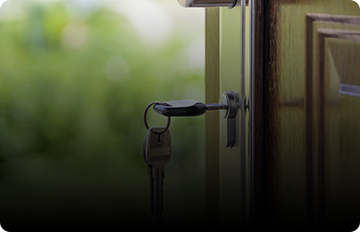Purchasing A Home
First-Time Home Buyer Mortgage in Lethbridge, Alberta
What is a mortgage?
A mortgage refers to the loan that is secured to real estate. It’s comprised of two parts: the principal, which refers to the amount initially borrowed; and the interest, which is what you pay the lender in exchange for the loan.
Mortgage term and amortization
Amortization refers to the total number of years it’ll take to pay off your mortgage. The term is the length of time you are entering into a specific agreement with a lender. The most common term length is 5 years, but many options are available.


Conventional vs high-ratio mortgages
When your down payment is 20% or more of the purchase price, you have a conventional mortgage, and you don’t need to pay for mortgage default insurance. Any down payment less than 20% of the purchase results in a high-ratio-mortgage and mortgage default insurance is required.
Mortgage default insurance
This protects the lender if you can’t make your mortgage payments. Sometimes known as “CMHC Insurance”, it’s actually available from 3 insurers: Canada Guaranty, Genworth Canada, and Canada and Mortgage House Corporation (CMHC). The premium is added to the total mortgage amount and is determined by how much down payment you have to put towards the purchase.
How much can I afford?

When you work with an agent at Mortgage Design Group, they will determine how much you qualify for by comparing your income against your total monthly debts.
Both your future housing costs (mortgage payment, property taxes, and heating) and other liabilities (credit cards, car loans, child support, alimony, student debts, etc.) must be taken into consideration.
It is best to determine this amount early in the process.
Down payment
The minimum down payment required in purchasing a home in Canada is 5% of the purchase price up to $500,000, and 10% on any funds over and above that amount up to $1 Million.
There are three forms of down payment:

Personal savings
These are funds that you have personally accumulated from employment, investments, inheritance, etc.
They can be held in a savings account, RRSP, TFSA, GIC, etc. and must be accompanied by bank statements showing the funds have been in your name for a minimum of 90 days.

Registered retirement savings plan (RRSP)
Although this is a form of personal savings, there is a government incentive that affects RRSPs. The Home Buyer’s Plan allows you to withdraw up to $35,000 from your RRSPs to purchase your first home tax-free. You have up to 15 years to repay the amount back into your RRSP account.

Borrowed funds
In some scenarios, you may be able to borrow funds from a personal line of credit to put towards your down payment. The borrowed amount will have to be factored into your monthly liabilities, and you need a minimum credit score to qualify.

Gifted funds from family
A gifted down payment can only be given by an immediate family member. A signed letter must be provided by the individual(s) providing the gift, stating that the funds being given are not expected to be repaid.
Mortgage Pre-Approval = Want to learn more about getting Pre-Approved for a Mortgage?
Purchasing A Home = Want to learn more about Purchasing a home?
Building A Home = Want to learn more about Building A Home?
Buying An Investment Property = Want to learn more about Buying An Investment Property?
Renew Your Mortgage = Want to learn more about Renewing Your Mortgage?
Refinance Your Mortgage = Want to learn more about Refinancing Your Mortgage? +









